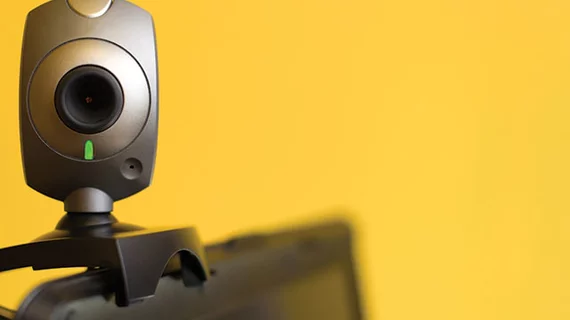Real-time Video: Imaging 3.0 Toolkit?
Using real-time video to enhance radiology interpretations is not new. But the convergence of teleradiology and traditional telemedicine, which have followed different paths over the past 15 years, sure is. One driver of this convergence is the Imaging 3.0 initiative from ACR. Part vision, part action plan, Imaging 3.0 seeks to put radiologists in a leadership role in shaping America’s future healthcare system, including the transition from volume to value.
“Imaging 2.0 emphasized increased volumes, increased RVUs, and decreased turnaround times. Imaging 3.0 will emphasize increased quality, increased patient safety, and improved outcomes,” says William Boonn, MD, president and CEO of a radiology analytics company and also a practicing radiologist at the University of Pennsylvania, Philadelphia. He explained the shift in emphasis from volume to value at the Spring 2014 meeting of the Northeast Chapter of the Radiology Business Management Association.
Further adoption of real-time video will require respect for the established workflow of radiology practices. Jay Sanders, MD, CEO of a telemedicine consulting group and president emeritus of the American Telemedicine Association, describes the potential benefits of real-time video as creating a more collegial interaction between physicians for the betterment of patient care.
One example is the potential for involving the radiologist earlier in the diagnostic process. The referring physician could bring in the radiologist to consult about whether a particular imaging exam even needs to be performed. Such interaction fits into healthcare trends like introducing protocols that reduce radiation dose.
Collegial interaction also will enhance value by facilitating involvement of technical specialists. Gorkem Sevinc, MS, CIIP, systems development manager and research associate in radiology at Johns Hopkins Medical Institutions in Baltimore, emphasizes the management of findings and consultation workflows. He describes benefits for patients and professionals: “There used to be a lot of face-to-face time in radiology, before going digital, when the radiologist was an easy visit down the hall. While technology advances such as PACS and enterprise viewers have brought tremendous advantages to radiology for productivity and quality improvement, clinicians have gradually lost touch and communications with our radiologists. Through a tool that uses video and image viewer synchronization, we are trying to bring back the face-to-face between clinicians and radiologists.”
Near and far
Real-time video also expands the international reach of healthcare practice and organizations. Garry Choy, MD, MBA, radiologist and director of informatics, Massachusetts General Hospital Imaging Trials Center, speaks of the international potential of teleradiology: “I recently had the opportunity to do radiology rounds with pulmonologists and radiologists from Beijing, China. The biggest thing was that, in addition to being able to all view the images, I could see the team, and they could see me. Seeing each other for half an hour has led to new professional connections, academic collaboration, and potential international teleradiology business. It’s also good for brand management and raising awareness of our radiology department and services offered. On a pro bono basis, I also recently participated in a consultation with radiologists and neurosurgeons in Uganda. Internationally connecting with video, which can be free, is less expensive and easier than making a phone call, creating a path of least resistance.”
A move to value-focused, real-time video also is consistent with evolving patient behavior. As patients become more empowered and interested in decisions about their care, they have become more comfortable using the Internet to research their diseases and potential treatments. Incorporating real-time video involving the patient is a logical next step. A patient could participate in a simultaneous consult between his or her primary care physician and a subspecialty radiologist. If necessary, a translator or family member also could be a part. All could see and annotate the medical image.
With more patients eligible for healthcare coverage under the Affordable Care Act, and anticipated physician shortages, tools like video consultation need to be part of the overall solution. For real-time video to become more widely used, however, several challenges need to be addressed. These include development of appropriate reimbursement and licensing rules; encouragement of care measures more consistent with the emphasis on value; and promotion of video’s benefits for patients and healthcare providers by publicizing success stories.
Value-focused measurement of patient care could be the basis of success stories emphasizing value-based metrics like reduced patient re-admissions and reduced duplicate or unnecessary tests, with the associated benefit of reduced radiation doses for patients.
Several tools already on the market are being incorporated into radiology practices. One radiology company offers 24/7 on-demand access to subspecialty radiologists via live consultations or video conferencing. Another allows a radiologist to make “on-the-fly” audio/video consults on interesting or confusing cases. Yet another has started a separate company offering second opinions on an international basis, via phone or video chat. Vendors also are beginning to use live video to train remote technicians in the use of their products. Better physician-technician coordination and increased familiarity with new products and services contribute to enhanced value.
Although the tools for real-time video exist today, physician acceptance will drive its adoption. Widespread adoption will occur when there is enhanced training on easy-to-use technology, motivated vendors, supportive insurers, proven return on investment, and improved patient outcomes based on value over volume.
Howard Reis is president of a healthcare solutions company and can be reached at hreis@healthepractices.com
